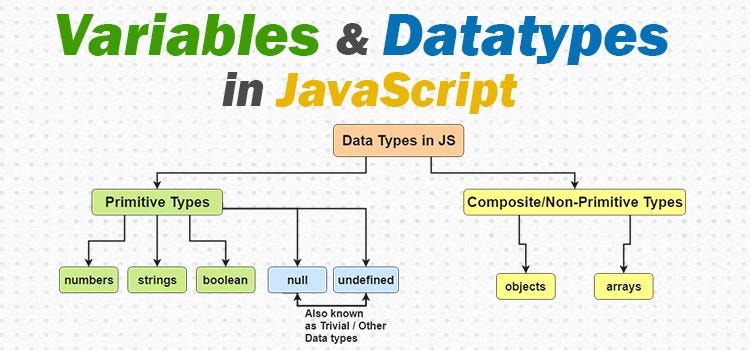JavaScript is the backbone of dynamic web development, and understanding its variables and data types is essential for any aspiring or seasoned developer. This knowledge forms the basis of writing robust, efficient, and maintainable code. Here’s a deep dive into the key concepts and practical applications of JavaScript variables and data types.
Variables in JavaScript
Variables are containers that store data for use within your program. JavaScript offers three main keywords to declare variables:
var: The traditional keyword with function-scoping.let: Block-scoped and recommended for most modern applications.const: Block-scoped and used for immutable values.
Example:
javascriptCopy codelet name = "Efrelance";
const yearFounded = 2021;
var userCount = 5000;
🔗 Discover more about JavaScript fundamentals: Introduction to Front-End Frameworks.
JavaScript Data Types
JavaScript has two main categories of data types:
- Primitive Types: These are immutable and include:
- String: Text data (
"Hello, World!") - Number: Numeric data (
42,3.14) - Boolean: True or false values (
true,false) - Null: Represents an intentionally empty value.
- Undefined: Indicates an uninitialized variable.
- Symbol: A unique and immutable identifier (ES6).
- BigInt: Handles very large integers (ES11).
- String: Text data (
- Non-Primitive Types: These are mutable objects, such as arrays and functions.
Example:
javascriptCopy codeconst isUserActive = true; // Boolean
let score = 99.5; // Number
const userName = "Jane"; // String
let tasks = ["Build", "Deploy", "Optimize"]; // Array
🔗 Learn about web styling: CSS Fundamentals: A Beginner’s Guide to Styling the Web.
Dynamic Typing in JavaScript
JavaScript is a dynamically typed language, meaning you don’t need to specify a variable’s type when declaring it. The type is determined at runtime.
Example:
javascriptCopy codelet data = "Efrelance"; // Initially a string
data = 101; // Now a number
🔗 Explore more about creating meaningful web pages: HTML Semantic Elements.
Best Practices for Variables and Data Types
- Always Declare Variables: Use
letorconstinstead ofvarto avoid scoping issues. - Use Descriptive Names: Variable names should be meaningful and self-explanatory.
- Avoid Global Variables: Limit scope to prevent unintended side effects.
- Understand Type Conversion: Be aware of implicit type coercion to avoid bugs.
🔗 Dive into dynamic web experiences: The Power of JavaScript Events.
Real-World Applications
JavaScript variables and data types are foundational to nearly every web development task. From capturing user input to managing state in frameworks like React, these concepts are indispensable.
Example Use Case:
Creating an interactive form where user input is stored in variables for validation and processing.
javascriptCopy codelet userInput = document.getElementById("inputBox").value;
if (userInput) {
console.log(`User entered: ${userInput}`);
} else {
console.log("No input provided");
}
🔗 Enhance performance: Website Performance Optimization.
Final Thoughts
Mastering JavaScript variables and data types is your first step towards building efficient and scalable web applications. Their flexibility and dynamic nature empower developers to create interactive, user-friendly experiences, making JavaScript a cornerstone of modern web development.









